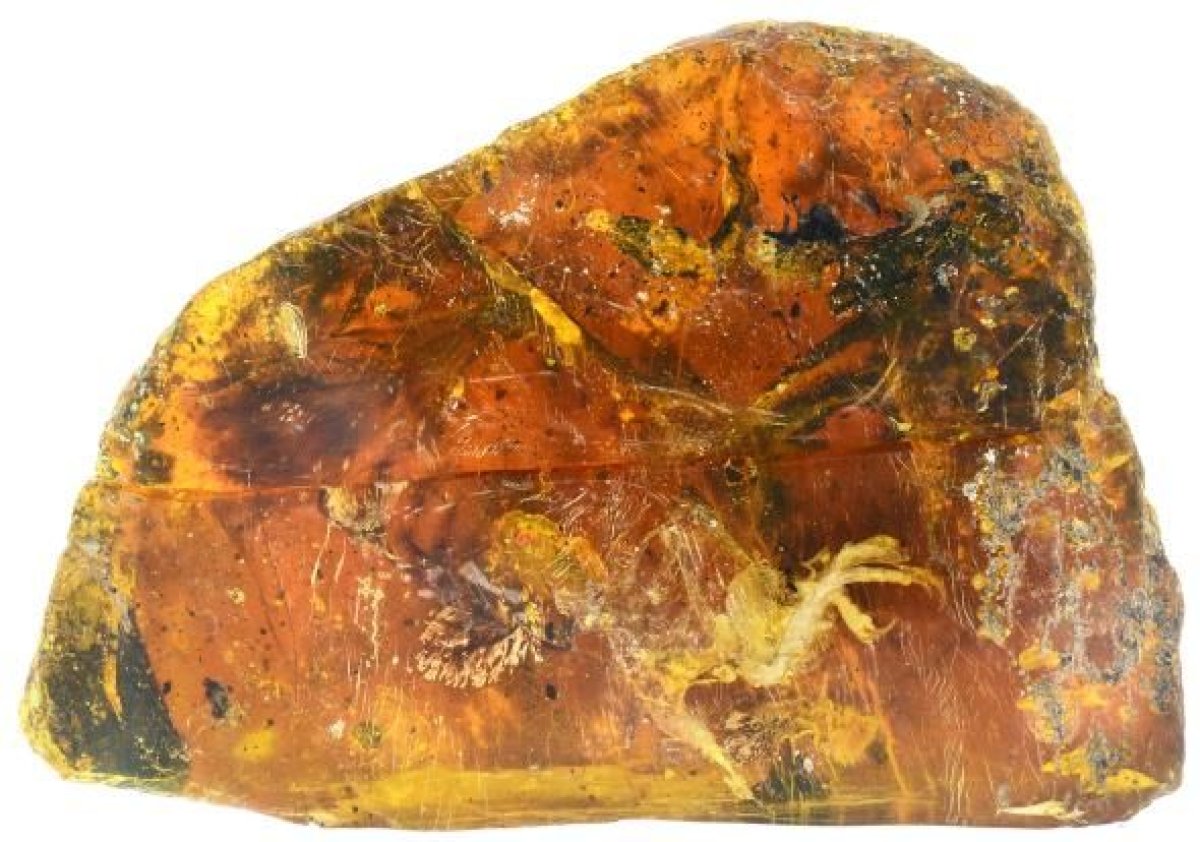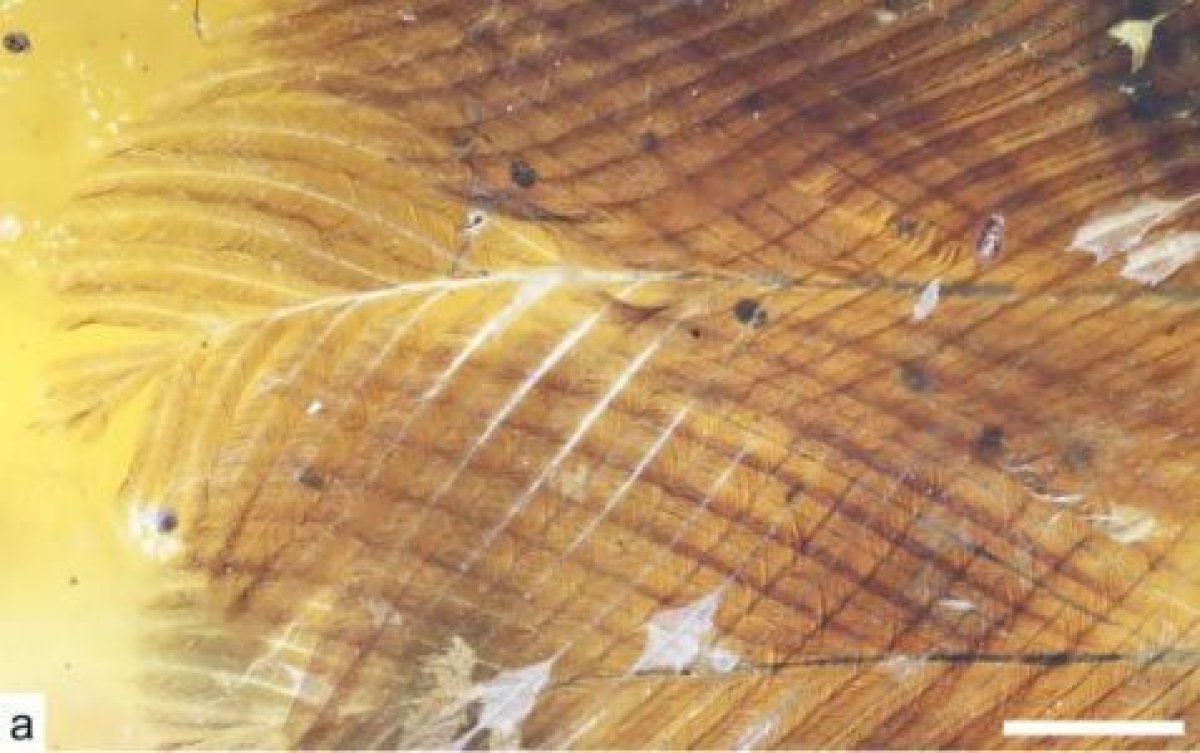
Researchers in Myanmar have discovered a 99 million-year-old baby bird encased in amber . The ancient hatchling died when it was just a few days or weeks old after a blob of sticky tree resin fell on it, leaving half of its body frozen in time.
Xing Lida, from the China University of Geosciences, led an international team of researchers in analyzing the three-inch specimen. Their study, published in the journal Gondwana Research, will help scientists better understand the toothed birds that lived alongside dinosaurs—and how they differ from birds living today.
The amber encases the bird's skull, neck, a partial wing, a hind limb and one foot. The hatchling would have belonged to a group of birds called enantiornithines, that lived during the Cretaceous period, 145 to 65 million years ago. They died out during the mass extinction event that killed off the dinosaurs.
The National Geographic Society's Expeditions Council partly funded the research. The fossil was mined from the Hukawng Valley in northern Myanmar.

Scientists discovered the bird was unusual in several ways—the structure of its wings was very similar to those seen in modern flying birds—but it retained some features that are seen in more primitive theropods, the group of dinosaurs from which modern birds emerged.
Chen Guang, curator of a museum in Yunnan and owner of the specimen, told Xinhua : "Many people thought it was a lizard. But the scales, thread-like feathers and sharp claws on the feet were so noticeable that I thought they must belong to a bird."
The team says its analysis indicates the bird would have been able to fly from birth, meaning it was less dependent on its parents for care. This is in contrast to modern birds today, where most hatchlings remain in the nest before developing the ability to fly.

Tseng Kuowei, from the University of Taipei, said the bird appears to have been hunting at the time of death. "There were no obvious signs of struggle," he tells Xinhua. "The overall posture of the bird resembled hunting, with its lifted body, open claws and beak and spread wings. It was possibly engulfed by falling resin at the exact moment it was hunting."
Researchers believe the specimen provides the most complete view of a hatchling's plumage from the Cretaceous period discovered to date, and that it provides an excellent reference point for comparisons with the body forms of other fossilized birds and feathers found in amber.
"Overall, the new specimen brings a new level of detail to our understanding of the anatomy of the juvenile stages of the most species-rich clade of pre-modern birds and contributes to mounting data that enantiornithine development drastically differed from that of [modern birds]," they wrote.
Uncommon Knowledge
Newsweek is committed to challenging conventional wisdom and finding connections in the search for common ground.
Newsweek is committed to challenging conventional wisdom and finding connections in the search for common ground.
About the writer
Hannah Osborne is Nesweek's Science Editor, based in London, UK. Hannah joined Newsweek in 2017 from IBTimes UK. She is ... Read more
To read how Newsweek uses AI as a newsroom tool, Click here.








